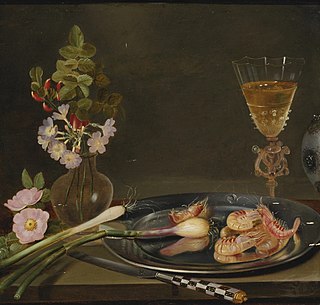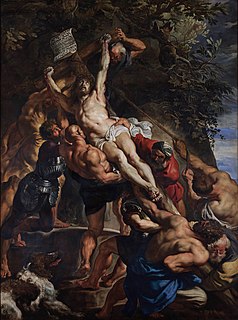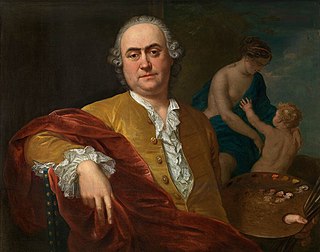Pieter Celie | |
|---|---|
| Born | 1942 |
| Nationality | Dutch |
| Education | Design Academy Eindhoven (1967-1969), Antwerp’s National Institute for the Arts |
| Known for | Art |
Pieter Celie (born 1942 in Eindhoven) is a Dutch artist
Pieter Celie | |
|---|---|
| Born | 1942 |
| Nationality | Dutch |
| Education | Design Academy Eindhoven (1967-1969), Antwerp’s National Institute for the Arts |
| Known for | Art |
Pieter Celie (born 1942 in Eindhoven) is a Dutch artist
Pieter Celie (born Theodor Geert van de Built) was born in Eindhoven in 1942, son of the photographer Bernardt van de Built. Celie trained his artistic skills in the Eindhoven’s Academy for Industrial Design (1967–1969) and later in the Antwerp’s National Institute for the Arts. [1] Since the beginning he mixed several media in a personal style, working both as a sculptor, draftsman, painter, designer and photographer. His work is highly influenced by Pop art and exhales the artist’s sense of humour, constituting a playful corpus of life-size wooden figures, colourful paintings with inserted strings, and evocative collages of photographs and drawings.
He founded the artistic group Unknown Genius (Miskende geniën)in his youth. His persona is polemical since already in 1969 he went on a trial for the scandal that his piece "Twenty penis" created; in 1976 the artist remained by mistake 22 days in jail and the sequel appeared in 1999 when he executed the piece "Groeten uit Sint-Gillis" (1999) evocating his stay in jail.
The artist has been actively exhibiting his work between Belgium and the Netherlands, in prestigious art centers like the Fine Arts Palace in Brussels, the Museum of Fine Arts in Antwerp, the Boymans van Beuningen Museum in Rotterdam and the Krabbedans and the Museum Kempenland in Eindhoven. His creations integrate the collections of important instances like the Dutch State, the Belgian State and the Museum of West-Flanders. He does currently live in Antwerp, Belgium.

Pieter Bruegelthe Elder was the most significant artist of Dutch and Flemish Renaissance painting, a painter and printmaker, known for his landscapes and peasant scenes ; he was a pioneer in making both types of subject the focus in large paintings.

The Royal Museum of Fine Arts Antwerp is a museum in Antwerp, Belgium, founded in 1810, houses a collection of paintings, sculptures and drawings from the fourteenth to the twentieth centuries. This collection is representative of the artistic production and the taste of art enthusiasts in Antwerp, Belgium and the Northern and Southern Netherlands since the 15th century. The museum has been closed for renovation since 2011.

Frans Ykens was a Flemish still life painter active in Antwerp and Brussels in the 17th century. He is mainly known for his flower pieces and fruit still lifes and also painted banquet pieces, pronkstillevens, garland paintings and larger game pieces.

Erasmus Quellinus the Younger or Erasmus Quellinus II (1607–1678) was a Flemish painter, engraver, draughtsman and tapestry designer who worked in various genres including history, portrait, allegorical, battle and animal paintings. He was a pupil of Peter Paul Rubens and one of the closest collaborators of Rubens in the 1630s. Following Rubens' death in 1640 he became one of the most successful painters in Flanders. He was a prolific draughtsman who made designs for decorative programmes in the context of official celebrations, for publications by the local publishers and for tapestries and sculptures realised by the local workshops. His work reveals the Classicist trend in the Baroque.

Flemish Baroque painting refers to the art produced in the Southern Netherlands during Spanish control in the 16th and 17th centuries. The period roughly begins when the Dutch Republic was split from the Habsburg Spain regions to the south with the Spanish recapturing of Antwerp in 1585 and goes until about 1700, when Spanish Habsburg authority ended with the death of King Charles II. Antwerp, home to the prominent artists Peter Paul Rubens, Anthony van Dyck, and Jacob Jordaens, was the artistic nexus, while other notable cities include Brussels and Ghent.

Osias Beert or Osias Beert the Elder was a Flemish painter active in Antwerp who played an important role in the early development of flower and "breakfast"-type still lifes as independent genres in Northern European art. He has been recognized as one of the most influential artists of the earliest generation of still life painters in Flanders. He contributed in particular to the development of still lifes placed on table tops featuring festive culinary delights as well as of sumptuous floral bouquets, typically displayed in Wan Li vases.

Theodoor Boeyermans, Theodor Boeyermans or Theodor Boeijermans was a Flemish painter active in Antwerp who painted Baroque history paintings and group portraits informed by the tradition of Peter Paul Rubens and Anthony van Dyck.

Balthasar Beschey was a Flemish painter, draughtsman and decorative painter of interiors. He started his career as landscape painter but later on switched to history and portrait painting. He played a prominent role in the development of the Academy of Arts in Antwerp and as a teacher.

Charles Emmanuel Biset or Karel Emmanuel Biset was a Flemish painter who had a peripatetic career working in various cities and countries including his hometown Mechelen, Paris, Annonay, Brussels, Antwerp and Breda. He worked in many genres including genre scenes of interiors with merry companies and gallery paintings, history painting, still life and portraiture.

Pieter Stoop is a Dutch painter of large abstract paintings.

Abel Grimmer was a Flemish late Renaissance painter, mainly of landscapes and, to a lesser extent, of architectural paintings. His works were important in the development towards more naturalism in Flemish landscape painting.

Jacob Grimmer was a Flemish landscape painter and draughtsman. His rural scenes and landscapes of views around Antwerp marked an important development in 16th century Flemish landscape painting away from the world landscape with its fantastic panoramas and whimsically-shaped gigantic rocks towards greater simplicity and authenticity. His work influenced the next generation of Flemish landscape painters. Grimmer was a capable colorist who was able to create harmonic landscapes by using realistic colours and atmospheric values effectively.

Pieter Snyers or Peter Snijers was a Flemish art collector, painter, draughtsman and engraver. He practised a wide variety of genres, including portraits, genre painting, still life and landscape painting. His masterpiece is a series of 12 paintings, each representing a different month of the year.

Wilhelm Schubert van Ehrenberg or Willem Schubart van Ehrenberg (also: Wilhem Schubert von Ehrenberg or Wilhem Schubert van Ehrenberg was a Flemish painter mainly active in Antwerp who specialized in architectural paintings including of real and imaginary church interiors, Renaissance palaces and picture galleries.

Jacob Vrel (fl. was a Dutch, Flemish, or Westphalian painter of interiors and urban street scenes during the Dutch Golden Age. He was active from 1654–1662.

The Fall of the Rebel Angels is an oil-on-panel painting of 1562 by the Netherlandish Renaissance artist, Pieter Bruegel the Elder. The painting is 117cm x 162cm and is now in the Royal Museums of Fine Arts of Belgium in Brussels, Belgium. The Fall of Rebel Angels depicts Lucifer along with the other fallen angels that have been banished from heaven. Angels are falling from the sun in a stacked manner along with ungodly creatures that Bruegel created. This piece by Bruegel was previously thought to be by Hieronymus Bosch. Bruegel was influenced by a variety of artists such as Albrecht Dürer, Frans Floris I, and Hieronymus Bosch. He also got ideas for the creation of his creatures in his previous works.

Ferdinand de Braekeleer, sometimes spelled as Ferdinand de Braeckeleer, was a Flemish painter. He is known for his historical paintings and is called 'the Elder' to distinguish him from his son with the same name, who was also a painter.
Despite its size, Belgium has a long and distinguished artistic tradition that goes back to the Middle Ages, considerably pre-dating the foundation of the current state in 1830. Art from the areas making up modern Belgium is called in English Netherlandish up to the separation with the Netherlands from 1570 on, and Flemish until the 18th century.

The St. Paul's Church or Sint-Pauluskerk is a Roman Catholic church located at the Veemarkt in Antwerp. Its exterior is mainly Gothic with a Baroque tower while the interior is characterised by its rich Baroque decoration. It holds paintings by Antwerp's leading artists Peter Paul Rubens, Anthony van Dyck and Jacob Jordaens as well as abundant sculpture and church furniture crafted by leading Antwerp sculptors such as Artus Quellinus the Elder, Pieter Verbrugghen I, Jan Pieter van Baurscheit de Elder, Jan Claudius de Cock and Andries Colyns de Nole. Of particular note is the Calvary outside the Church which is made up of 63 life-size statues and nine reliefs executed in a popular and theatrical style.

Theodoor Verstraete, also spelled Theodor Verstraete and Théodore Verstraete was a Belgian Realist painter and printmaker who is known for his landscapes depicting life in the countryside as well as his paintings of the Belgian coastal landscape. He has been called the 'poet of rural life' who depicted the humble life of the people in the countryside with empathy.